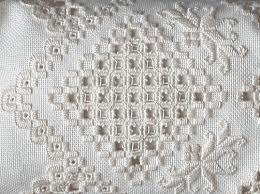Overview
Mathematical patterns underlie human activity, as far back as we can discover ancient artifacts. Architectural wonders such as the Parthenon, the Pyramids, and other ruins show that civilizations were able to apply geometric and mathematical relationships. Neolithic sites as far away as Newgrange, Stonehenge, and many others around the world, show an ancient grasp of complex mathematical calculations. Artifacts from the smallest decorated cup to the largest mosaics and tessellations show an appreciation of symmetry and balance.
Mathematical Patterns in Architecture
The ancient Greeks built the Parthenon and other complex building as monuments. Not surprisingly, the Parthenon, their most important temple on a high hill overlooking their capital city, is based on their divine proportion phi φ, also called the Golden Ratio. The Golden Ratio is also evident in the Great Pyramids of Egypt. Mayan temples in Central America show complex mathematical relationships that reflect their intense interests in mathematics and astronomy.
The Mystery of Stonehenge
Stonehenge is a ring of standing stones as part of the Amesbury complex. It is not known how the Neolithic builders used it, but the rings have relationships to each other, as well to the position of the sun during the summer and winter solstices and the spring and fall equinoxes. Other standing stones exist in many other parts of the world, such as Newgrange in Ireland, Carnac in France, Cueva de Menga in Spain, and other locations throughout Europe.
Patterns and Symmetry in Mosaics and Tessellations
Many civilizations around the world have developed intricate patterns of mosaics, as well as repeating tile patterns called tessellations. Tiles have been found in many different areas around Mesopotamia, including some intricate mosaic flooring in ancient temples, homes, and other public buildings. Mosaics were used in ancient Greece and Rome, as well as throughout the Byzantine Empire. Tessellations, or repeat patterns, are found all over the world, with some of the most beautiful and intricate patterns in old Seville, Spain, through Moorish architecture.
Patterns and Symmetry in Textiles and Fiber Arts
The earliest examples of weaving show a knowledge of symmetry and design. For example, symmetrical embroidery stitch patterns are echoed in traditional embroidery from East Asia, throughout India, throughout Egypt and the Middle East, to be duplicated in forms throughout Europe. The Hardanger embroidery techniques found in the Scandinavian countries are based upon multiples of threads and complex geometric relationships.
Interested in geometry tutoring services? Learn more about how we are assisting thousands of students each academic year.
SchoolTutoring Academy is the premier educational services company for K-12 and college students. We offer tutoring programs for students in K-12, AP classes, and college. To learn more about how we help parents and students in Dover, DE: visit: Tutoring in Dover, DE




